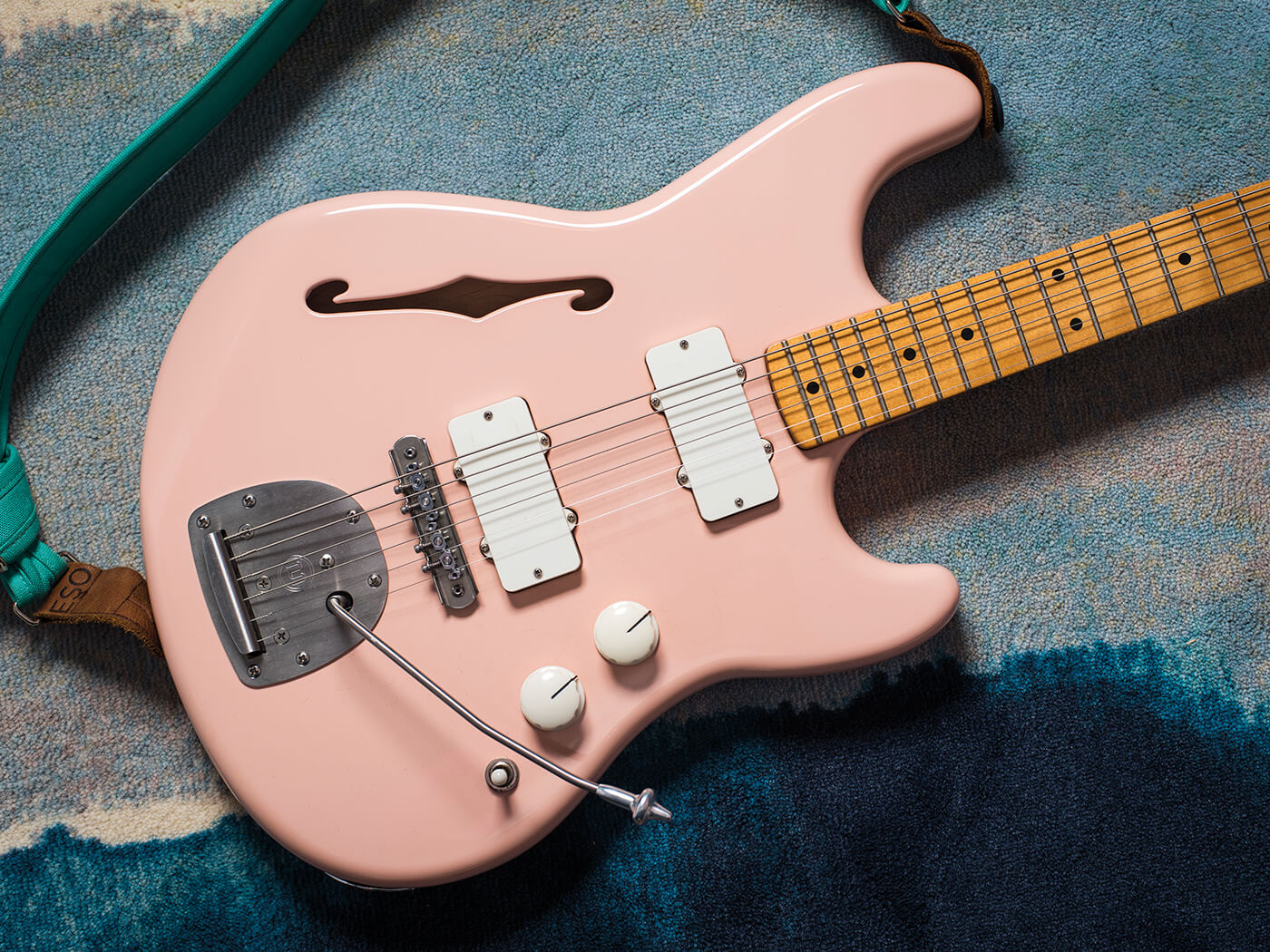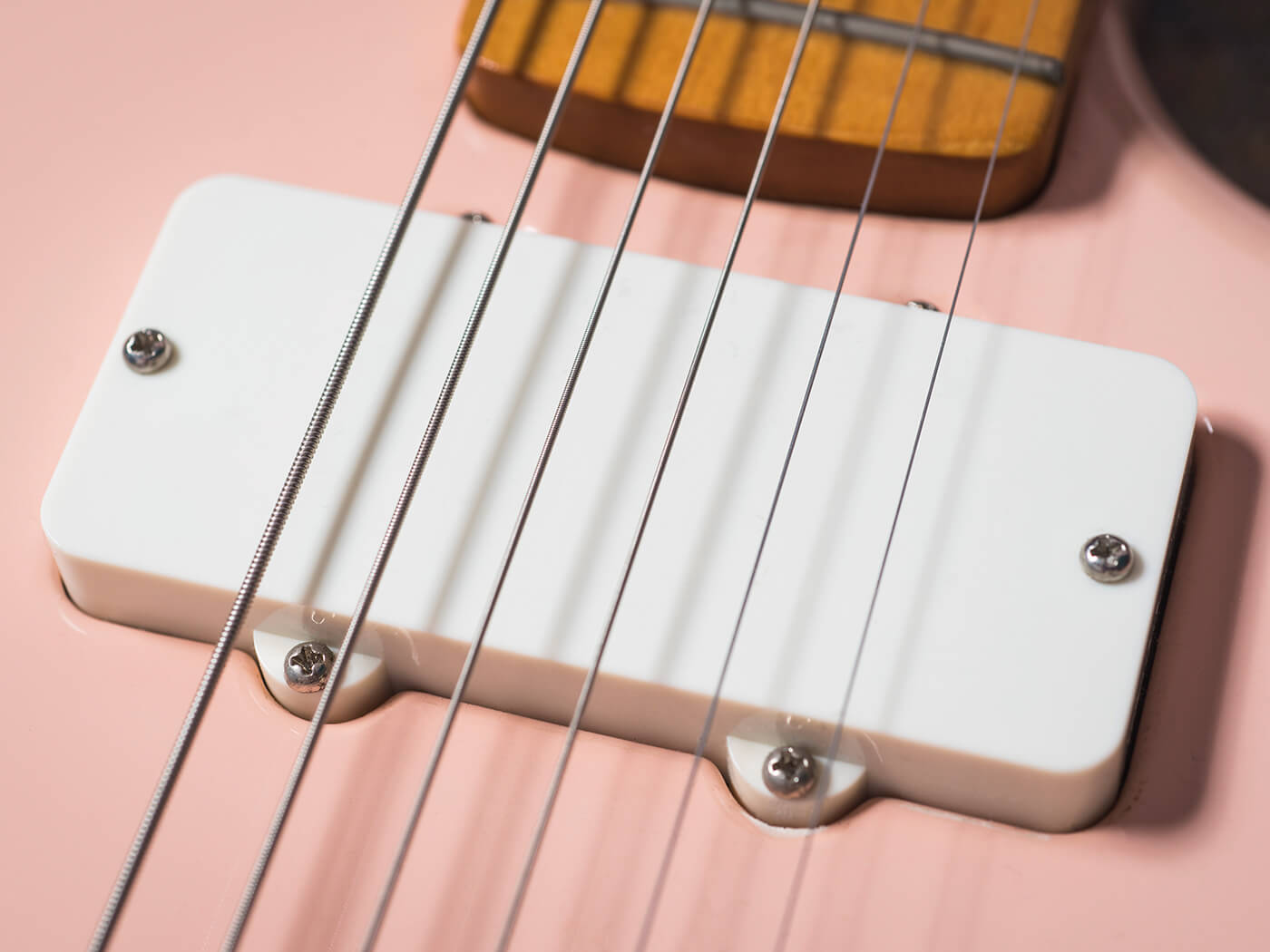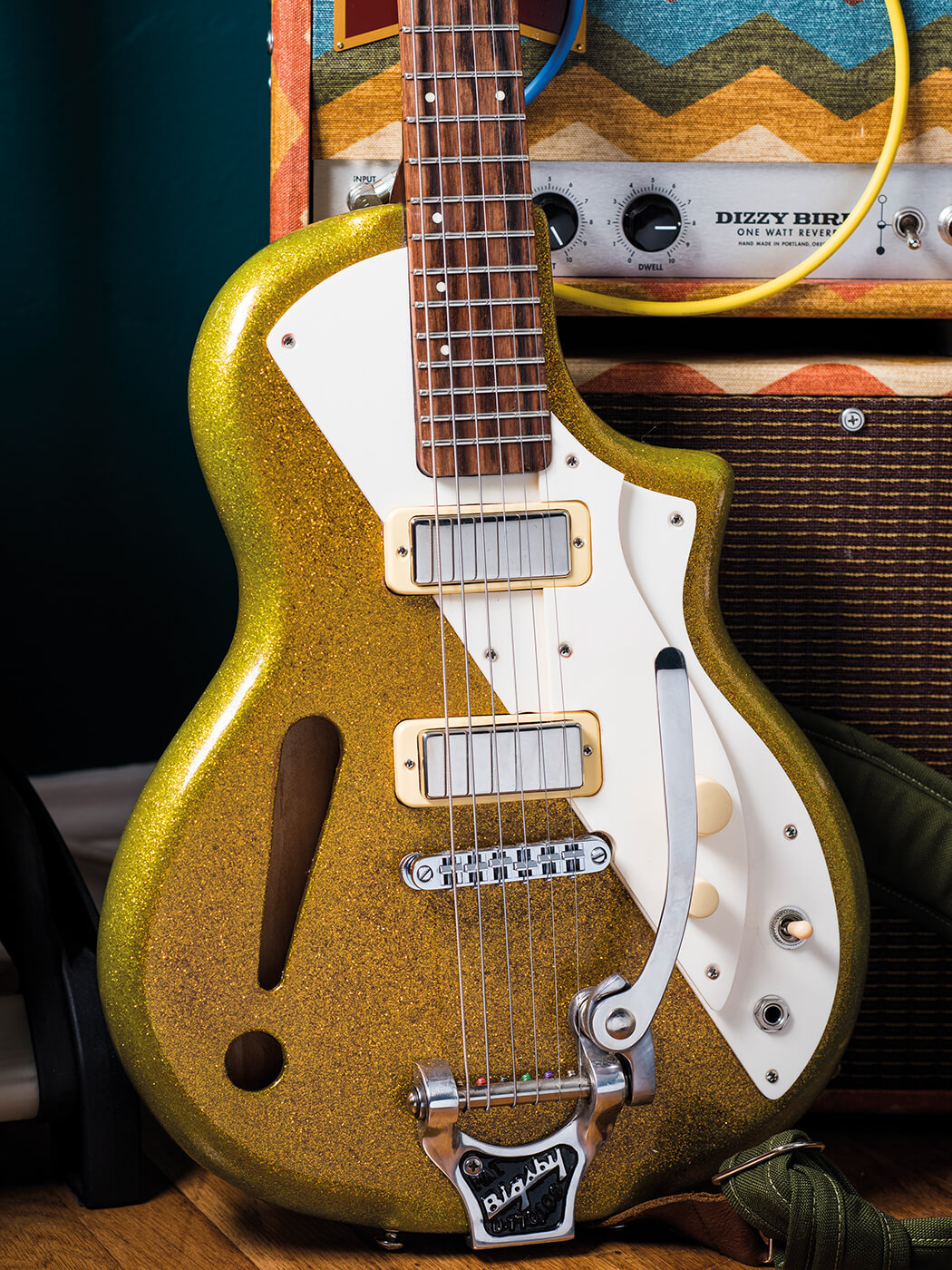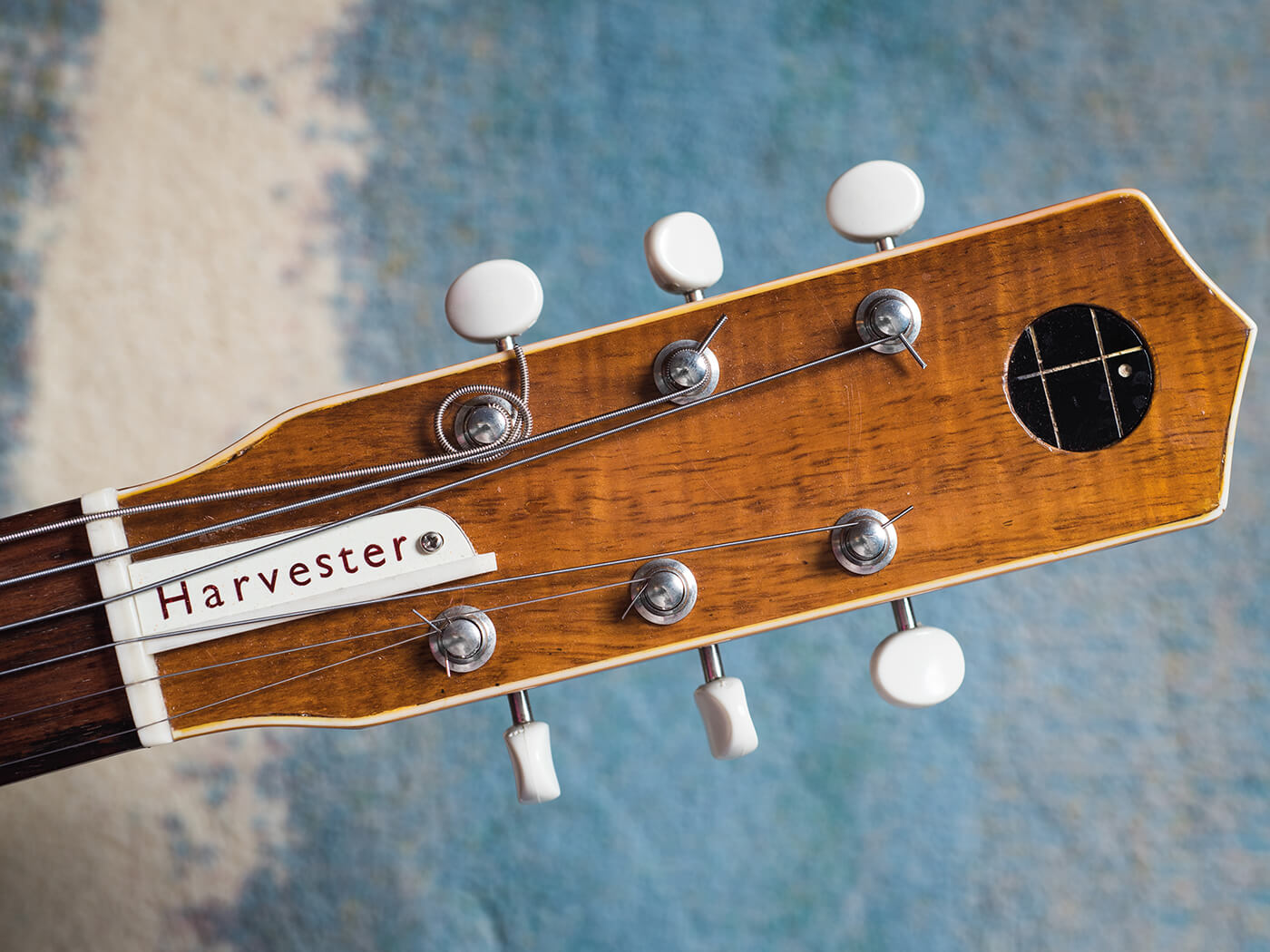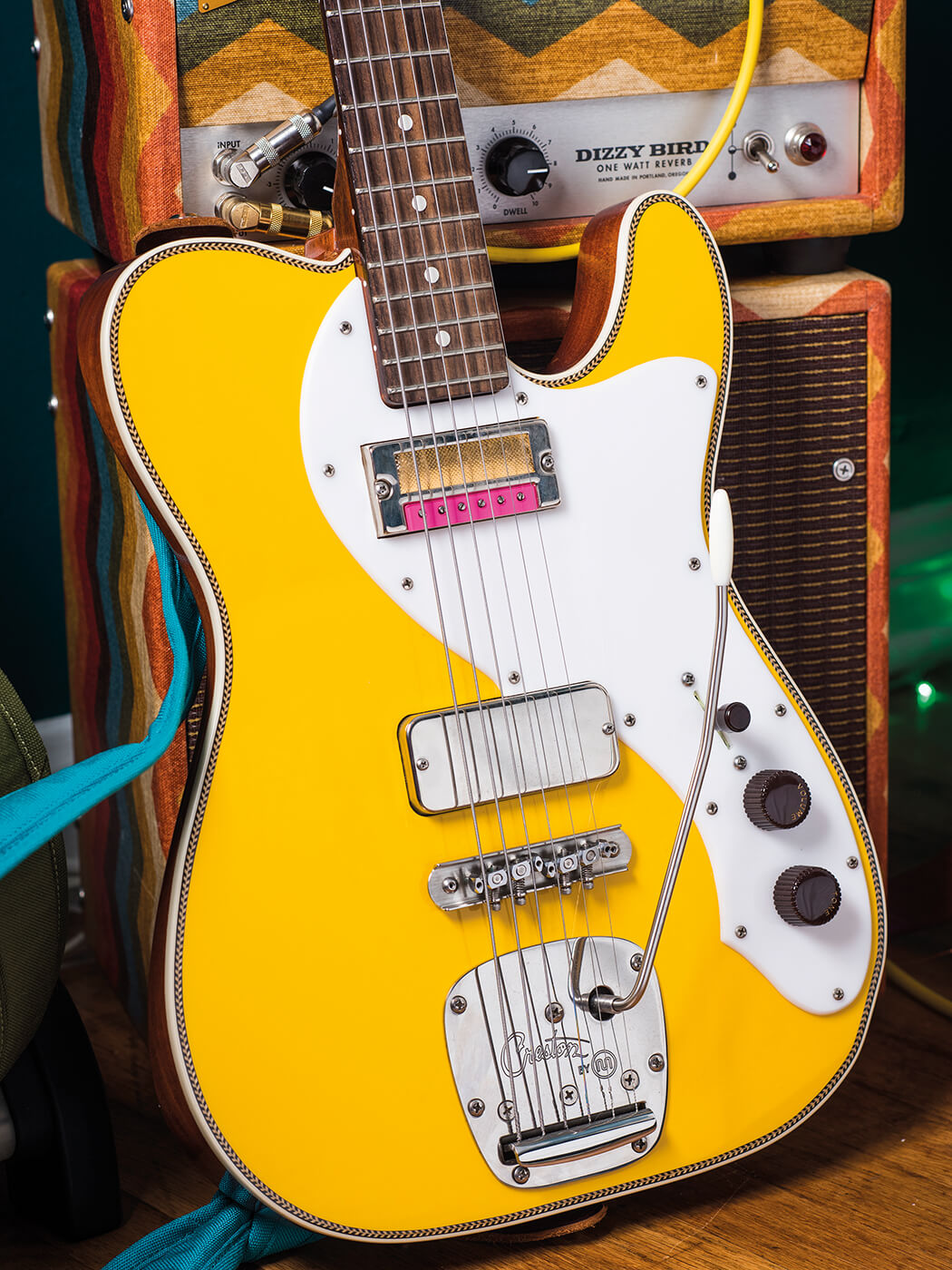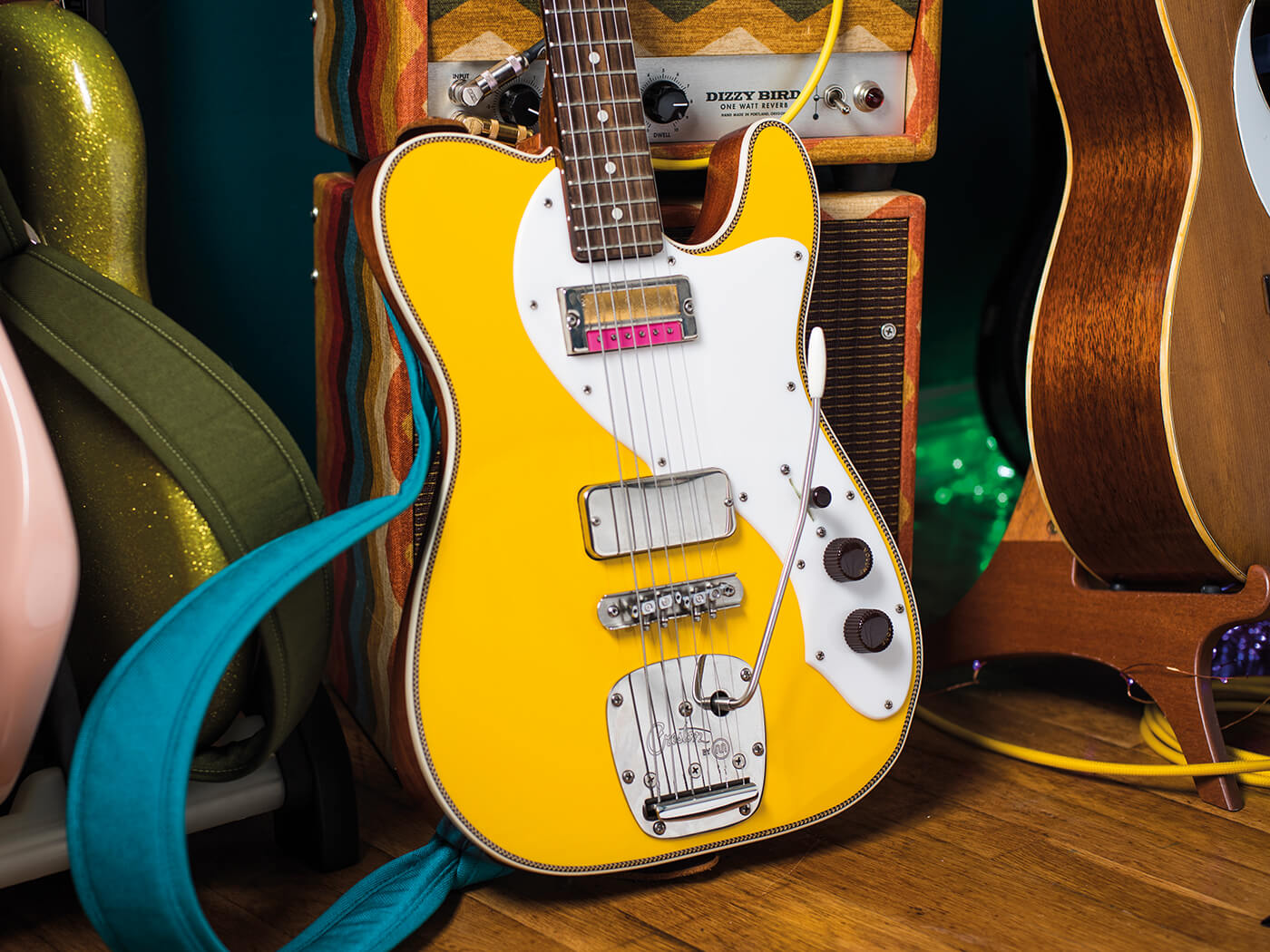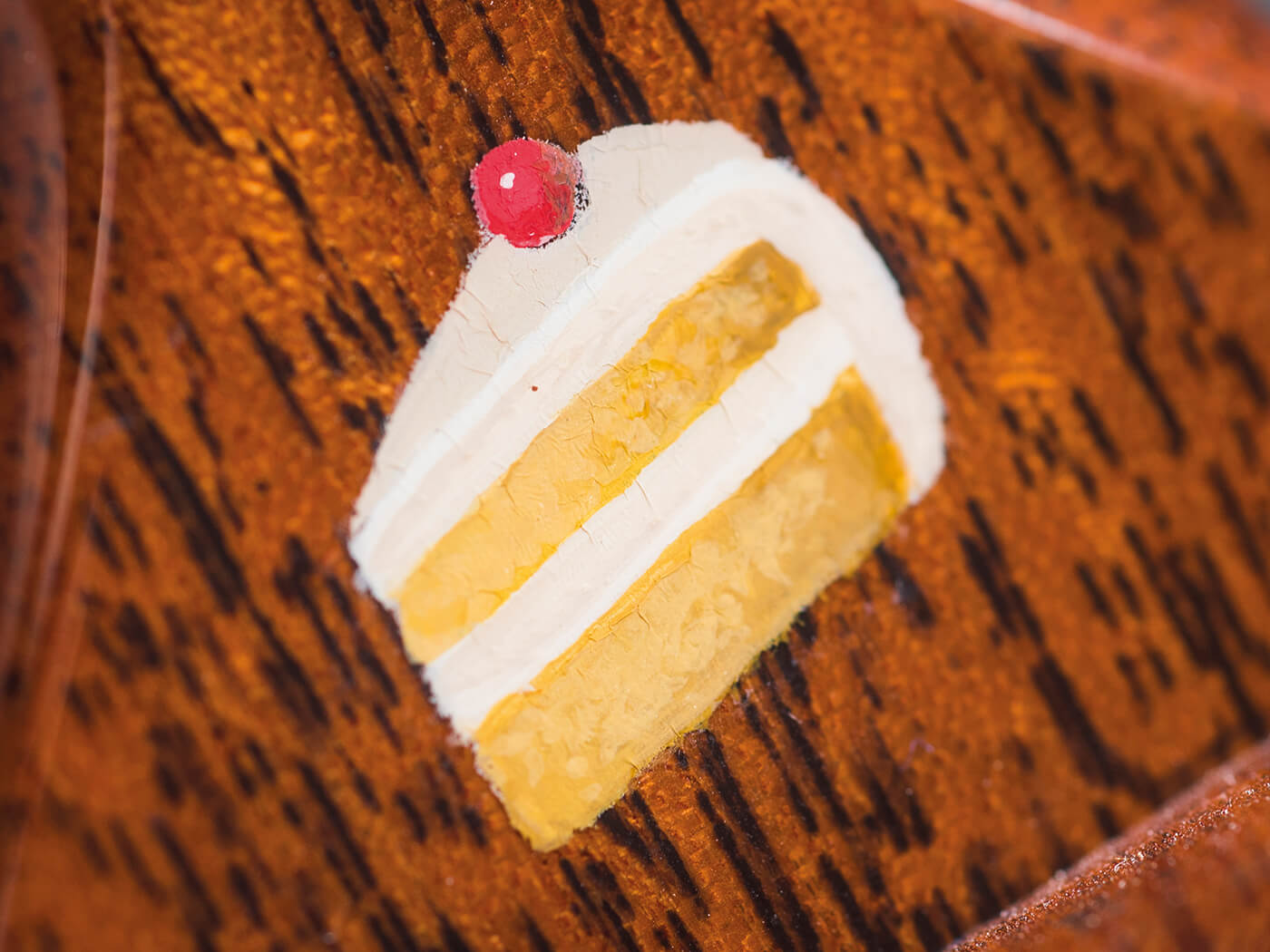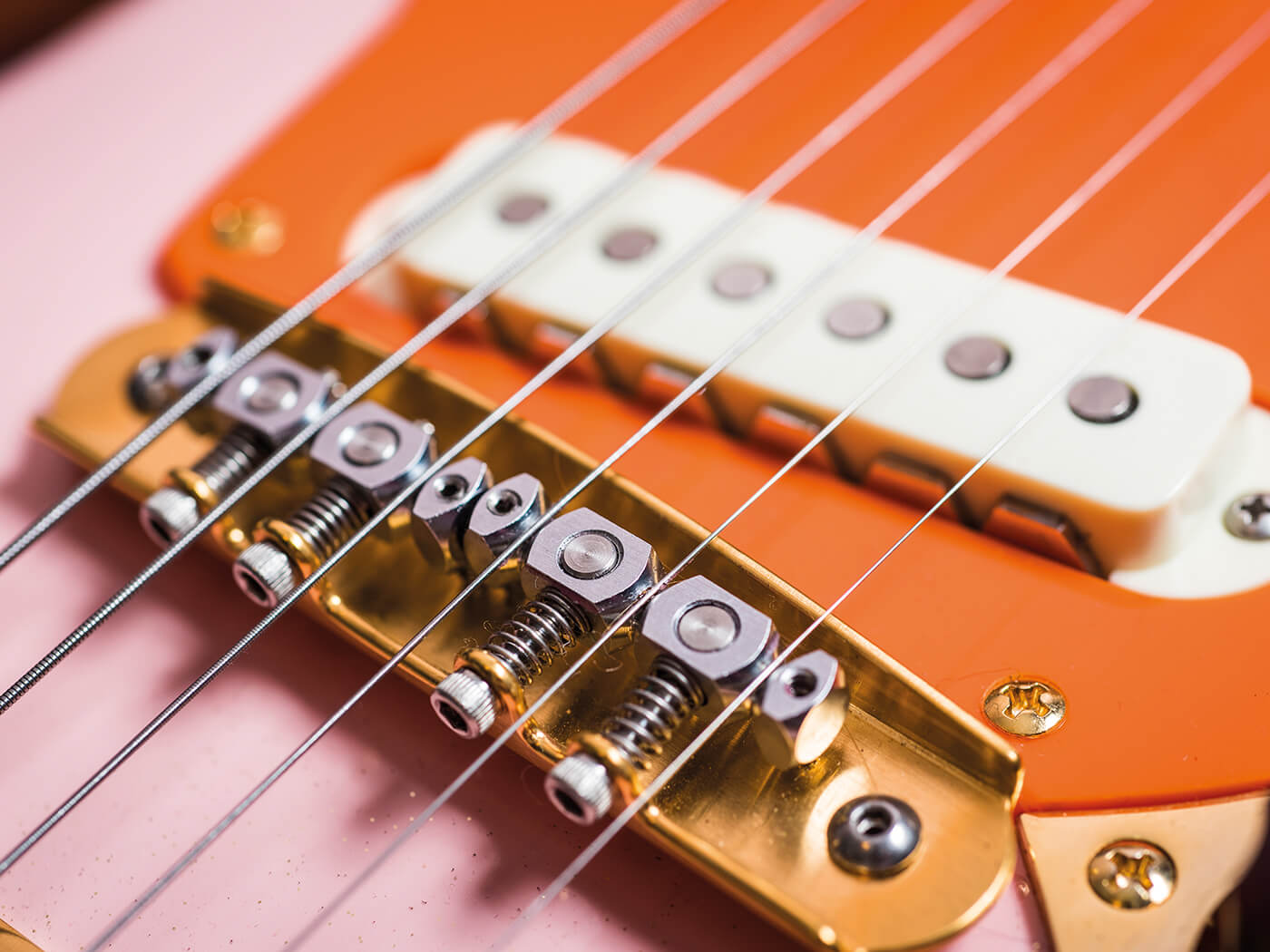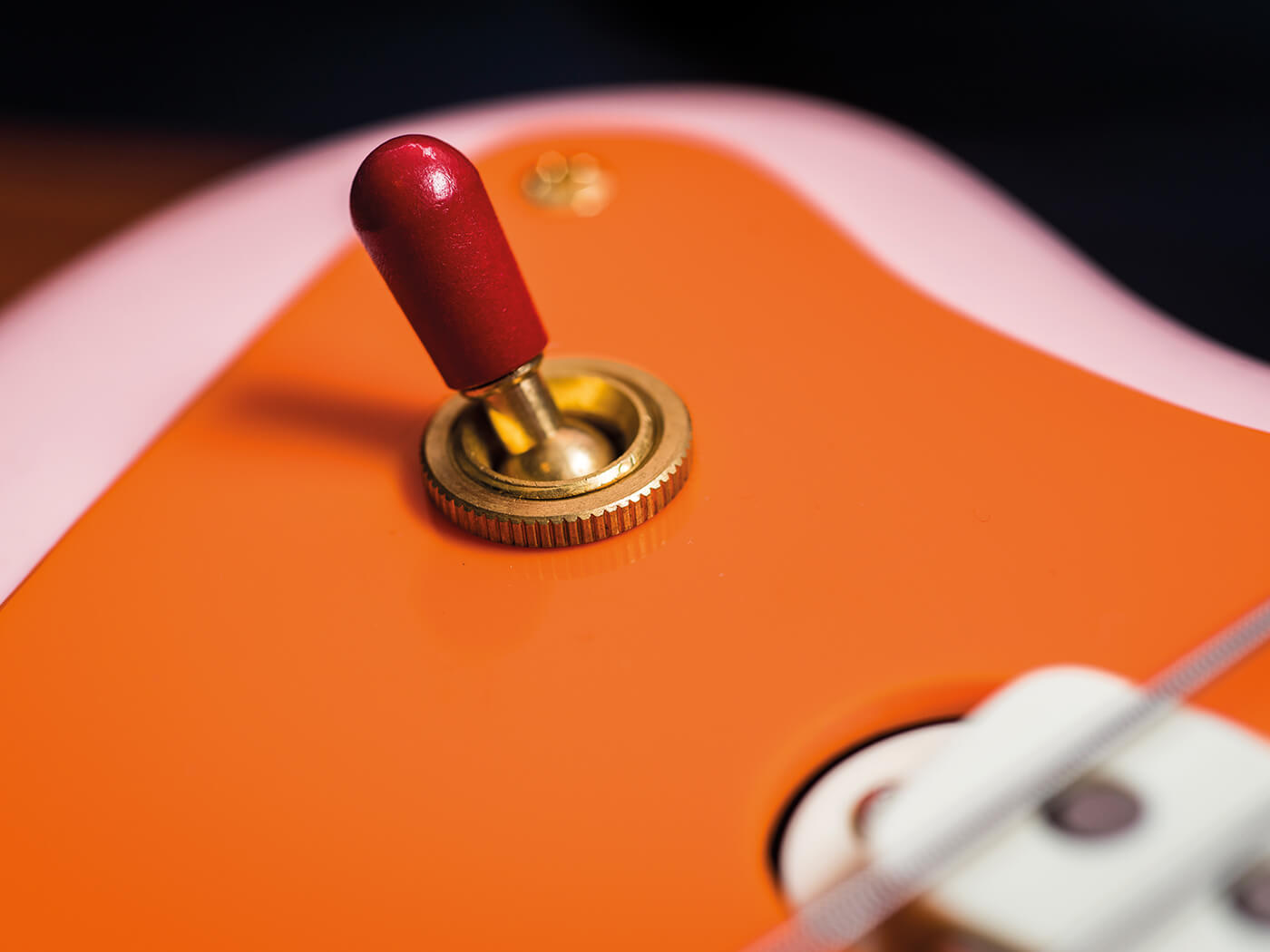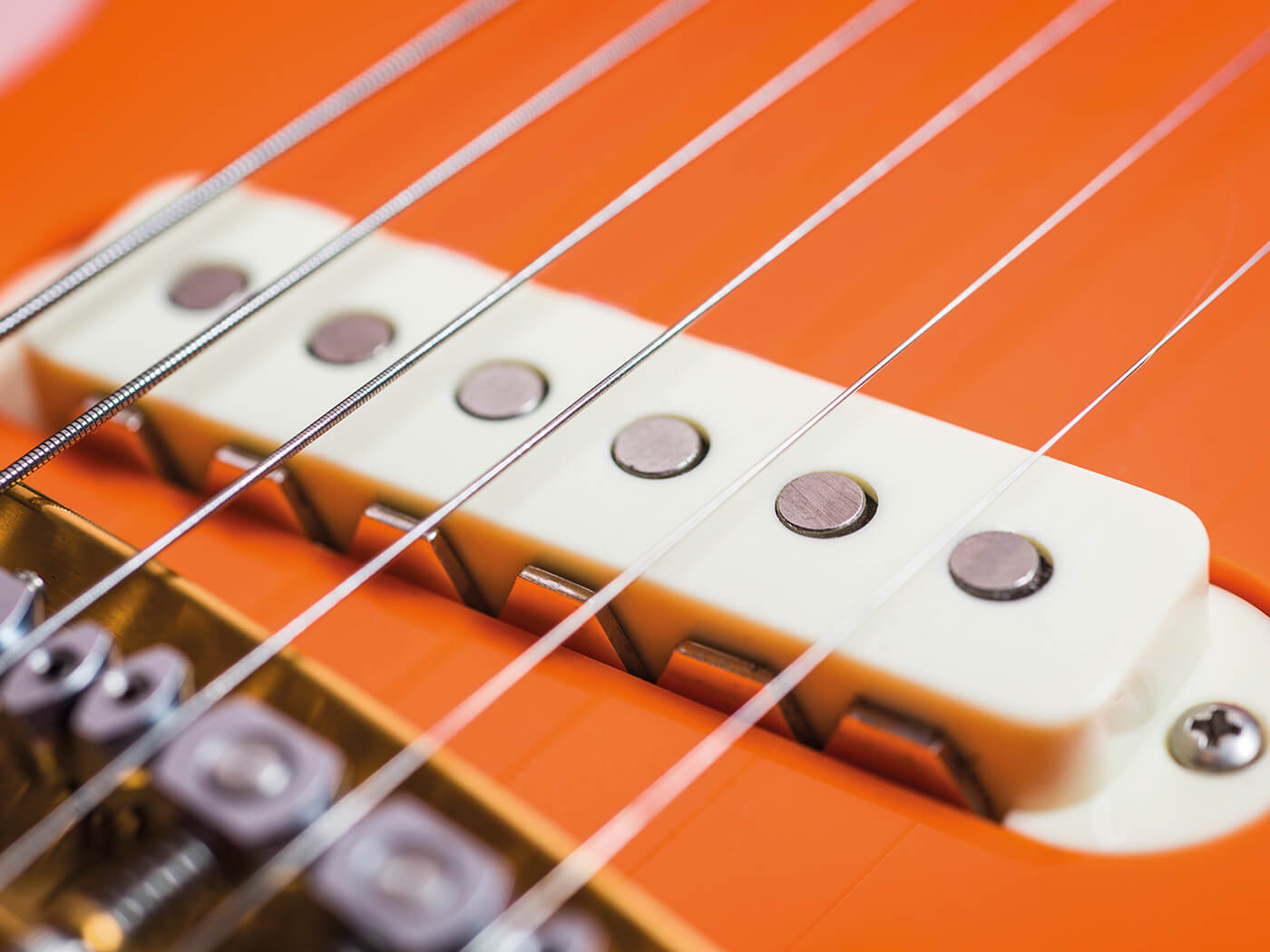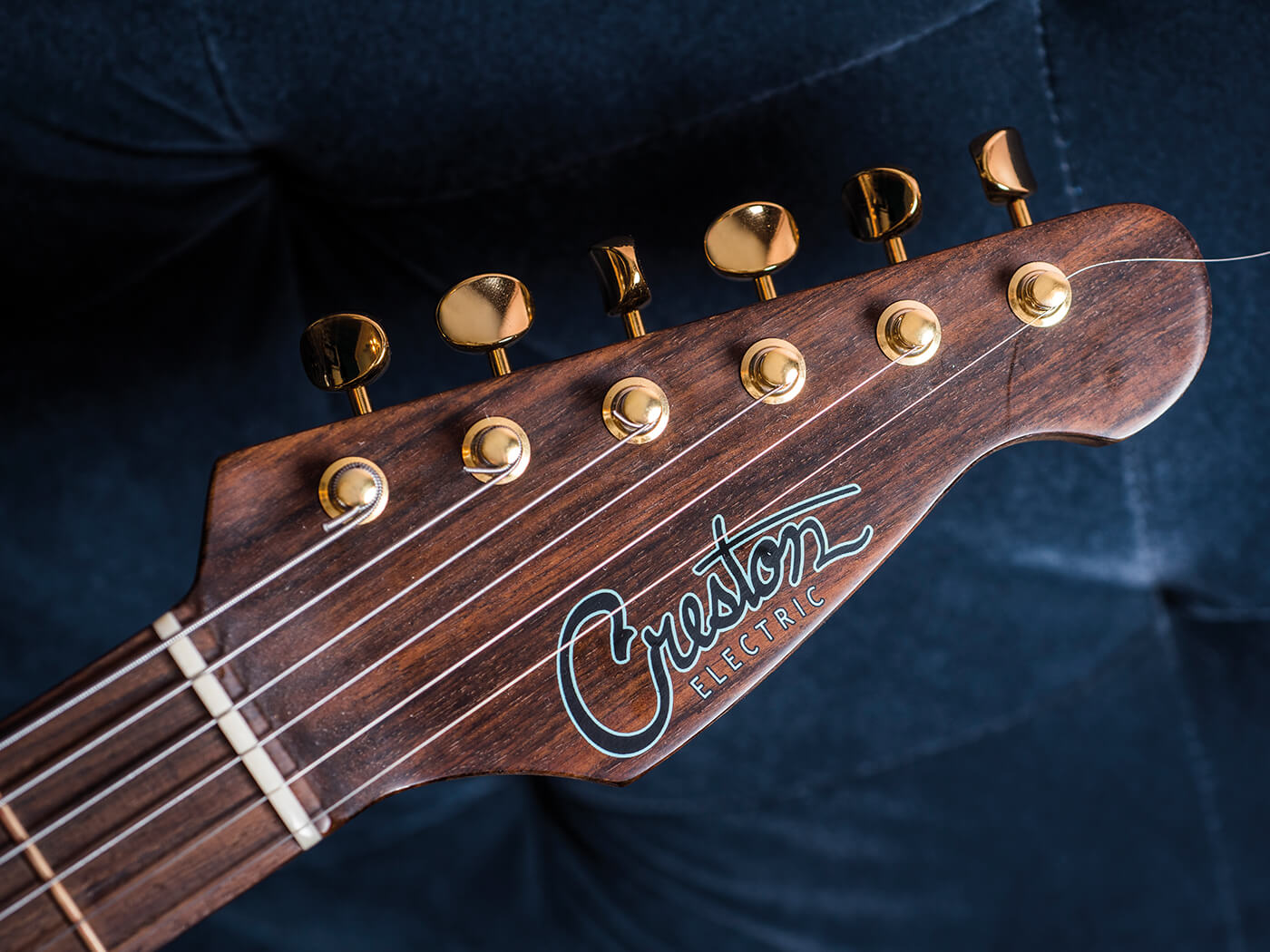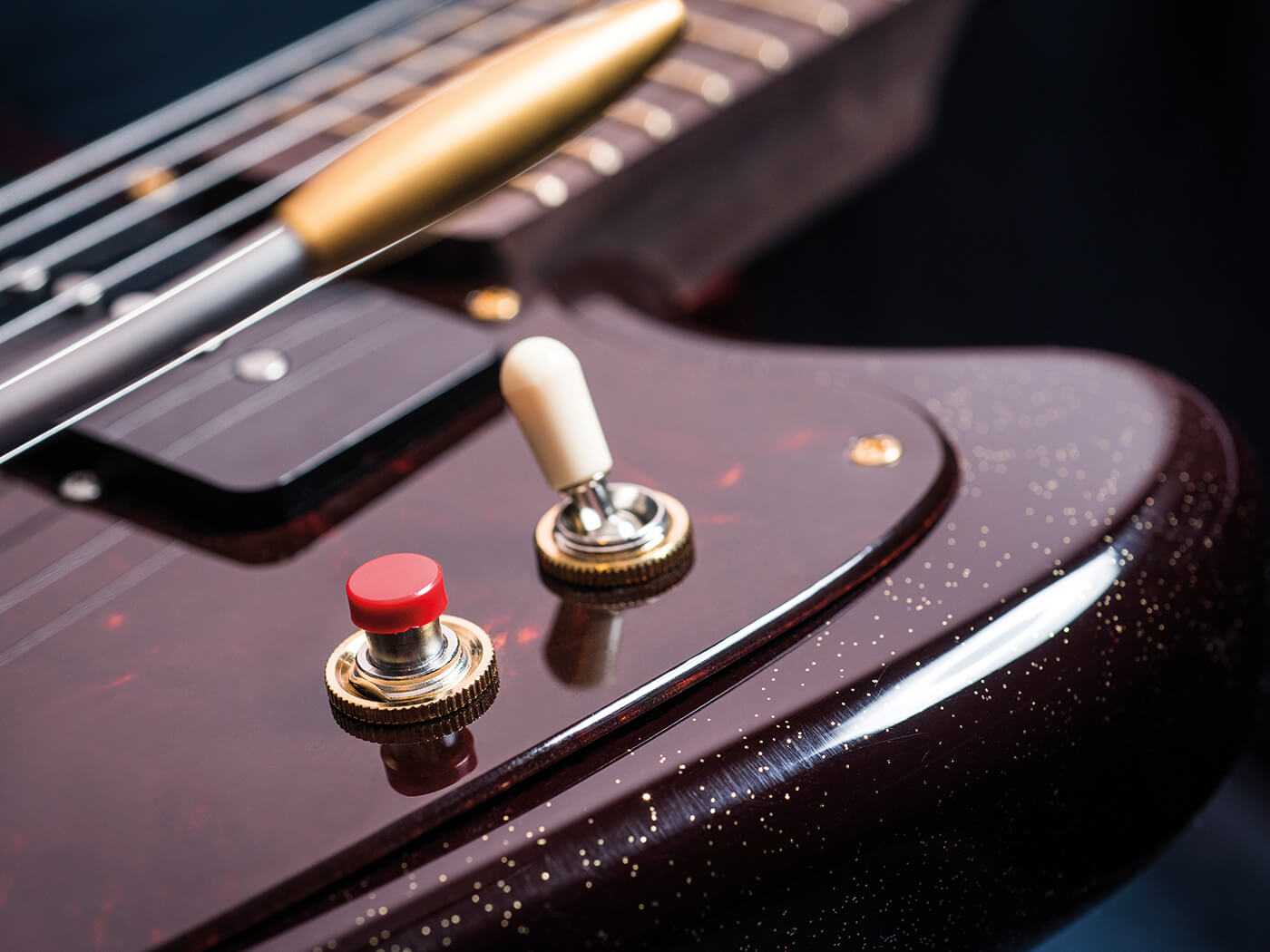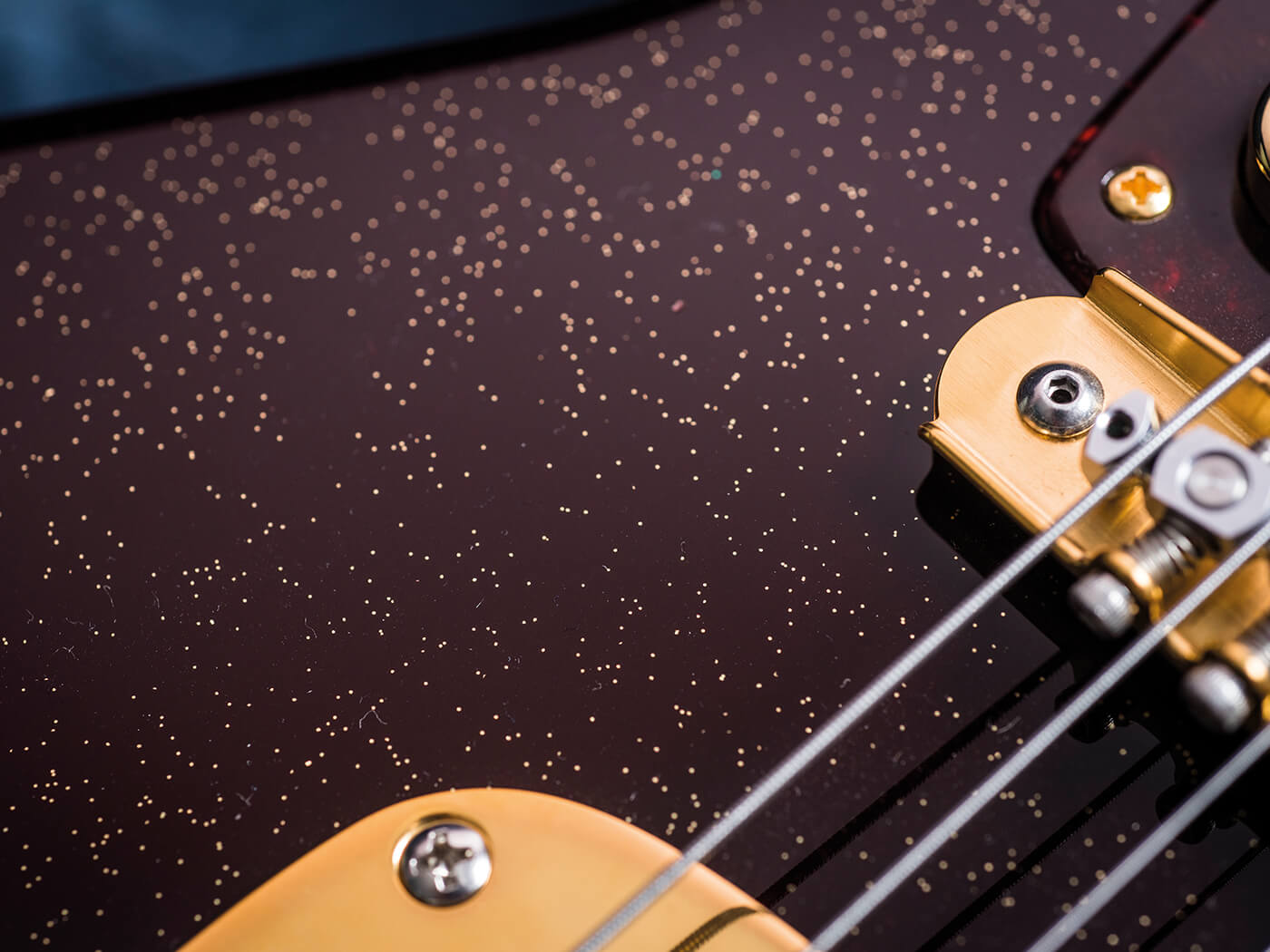Related Tags
Vanessa ‘VAVÁ’ Wheeler shows off her arresting guitar collection
Vanessa Wheeler’s genre-bending take on modern guitar pop is as exhilarating and unpredictable as her guitar collection. We head to Vanessa’s Los Angeles home to check out the technicolor tools of her trade.
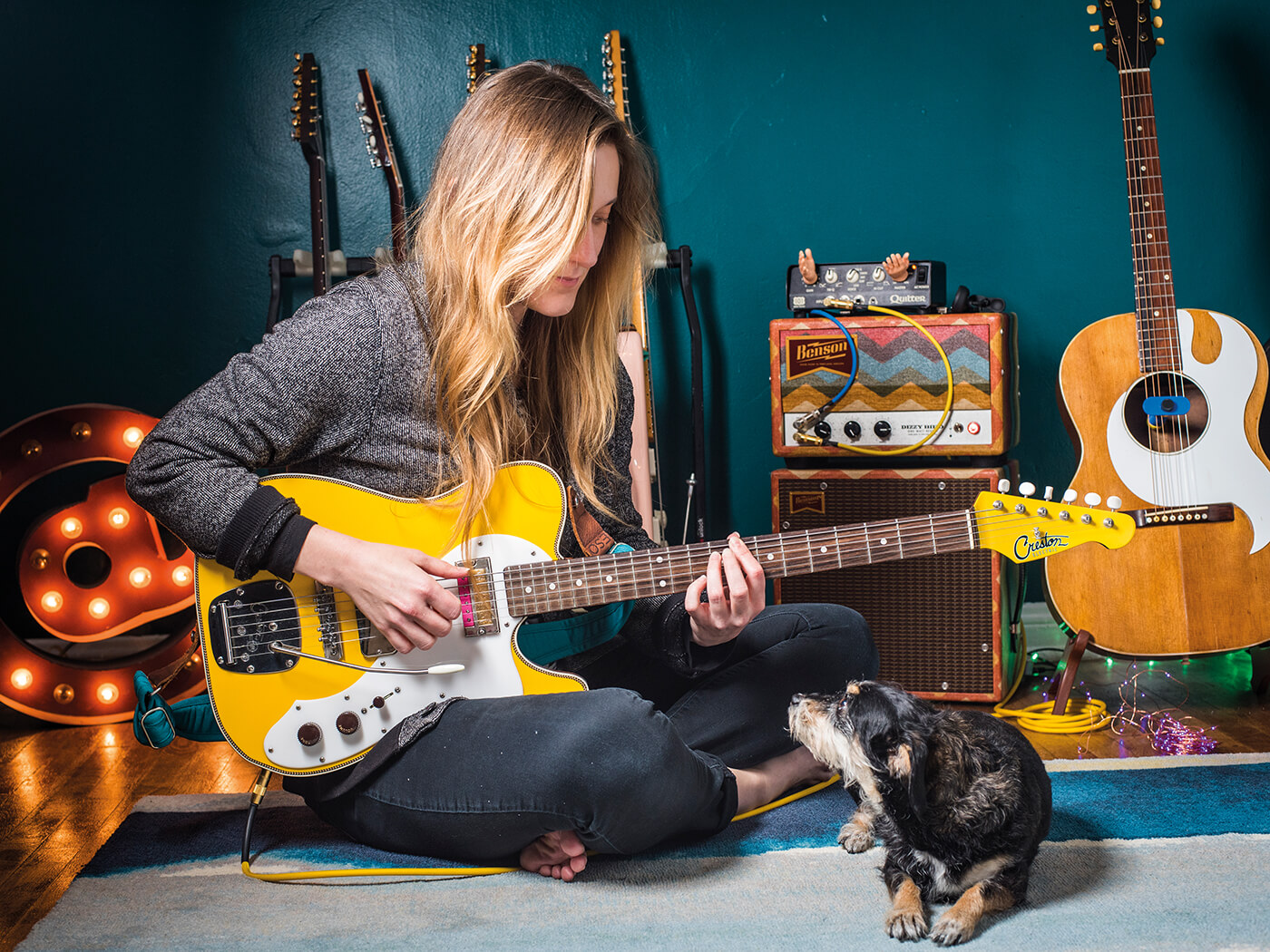
Unless otherwise stated, all images: Eleanor Jane
Los Angeles is a city absolutely brimming with talent that ranges from aspiring pop stars, weekend warriors and barroom brawlers to singer-songwriters who set up shop on the Sunset Strip hoping to nab your attention and a record deal. Often portrayed as cutthroat, the constant grind of the LA scene can seem overwhelming to newcomers; and even once you’ve acclimated, making a splash is a full-time job. With each new artist trying to capture a piece of the market, cultivating ‘relevance’ and chasing trends, far fewer actually seem to be carving a path for themselves on their own terms. Vanessa Wheeler is one such artist.
Under the pseudonym VAVÁ, Wheeler painstakingly crafts music that bridges the gaps between pop, traditional Brazilian guitar, electronica, and R&B. Her voice soars into the ether above her grounded, intricate guitar work, much of which filters through her Brazilian roots and jazz-guitar fluency. Her right hand is a force of rhythm, which she augments with time-based effects and a particularly clear, dynamic tone, perfectly suited for her complex open-chord voicings.
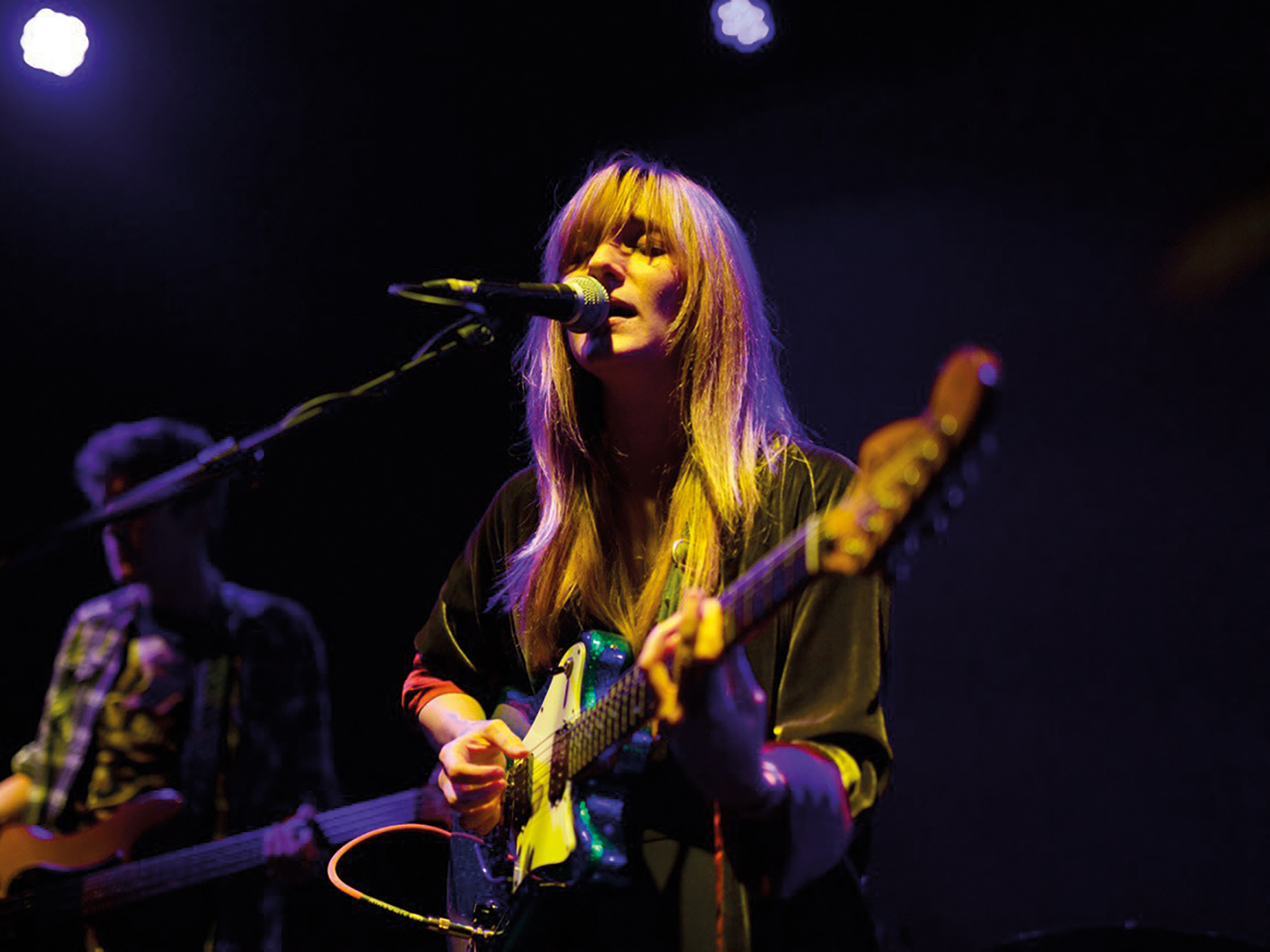
“Music was just a natural part of growing up,” she ruminates. “My education was my mom playing what she thought she’d heard on the radio, which is another filter, I suppose. She’d play these classical flourishes and turns, she’d add them to everything.”
Thanks to her mother, Vanessa was heavily influenced by Western classical and African music, bossa nova and even traditional chorinho, which translates to ‘little lament’ and features upbeat rhythms and improvisation. Vanessa describes it as “truly sad, melancholy party music”. And many years later during her stint at Berklee, she would return to chorinho for inspiration while studying composition.
Eventually, she latched on to the sounds of Ace Of Base, New Order, Brazilian pop, and European electronica. Later, she listened to Patty Griffin “obsessively” and soon picked up an acoustic guitar, leaning into the singer-songwriter genre, although the acoustic part didn’t stick. “I grew tired of comparisons to other singer-songwriters, so I ditched the acoustic and picked up electric instead.”
Going electric
Released in 2018, The Other Side EP shows off these influences along with her spindly, fractured style and heartfelt, relatable songwriting. Collaborator Francisco Ojeda, who simultaneously helms bass and beat duties, lends his punchy production to her songs resulting in an arresting listening experience. That goes double for Wheeler’s lyricism, wherein she earnestly tackles the topics of reckoning with love and sexuality, struggling with depression and suicidal thoughts, fear of the unknown, musical integrity and finding the strength to confront a world that’s often hostile to her personhood as a woman, an immigrant, and a member of the LGBTQIA+ community.
Vanessa’s snappy signature tone is no accident: she employs compact amplification, usually some blend of tube and solid-state elements with treble-forward equalisation and emphasis on percussive frequencies. Her tone is driving, but not overdriven; robust, but not overbearing; clear but not clean. “I favour smaller amps because I’m hard of hearing and very sensitive to loud sounds,” she reveals. “Plus, I don’t have the luxury of a studio – I play in my house – so I want to be able to get a little grime without blowing my head off.”
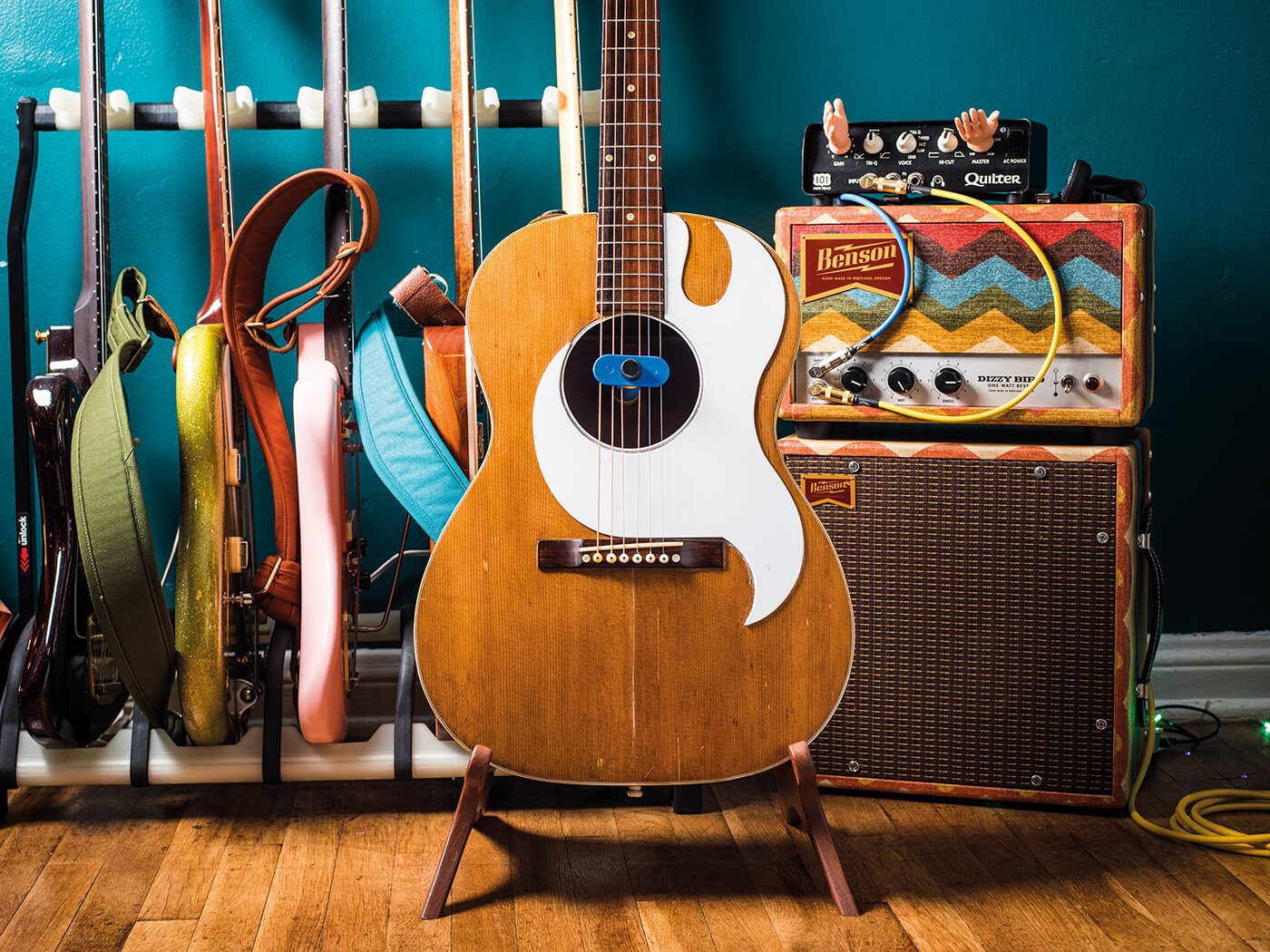
Her amp rig most often consists of a Benson Dizzy Bird tube reverb unit and one-watt amp paired with a Quilter 101 Mini which she uses as a preamp via the Benson’s direct input. This gives her the ability to drastically alter the basic tone of the Dizzy Bird at a “satisfying bedroom level”.
Recently, Vanessa’s been experimenting with the ZT Jazz Club, a solid-state 12-inch combo which packs a lot of sound into a small enclosure. She says she’s surprised by the response and room-filling sound of the ZT, remarking: “It’s the first solid-state amp I’ve played that does the thing that I like… there’s a sizzle to it, still hairy but responds like a clean amp.”
Echo chamber
Dressing up her paradoxically icy and thumping tone is a host of outboard delay and reverb units which function as a welcome part of her writing regimen. “Delay is a rhythmic partner, and having grown up playing by myself, it tends to keep me from rushing.”
Among her favourites are the pedals of Strymon Engineering, namely the Deco for saturated tape slapback and the Volante, a multi-head delay modeled after the Binson Echorec that’s much adored by Wheeler for its tactile feel and MIDI-friendly versatility. For reverb, it’s the Strymon blueSky and the Datachoir x Old Blood Noise Endeavors Rêver, which she calls out as “a fantastic 80s reverse reverb that’s really great for atmospheric sounds”.
Vanessa’s guitars are just as thoughtfully constructed as her signal chain: a collection that features heavily modified and bespoke, custom-built pieces made to meet her exacting specifications. There are a few common features shared between most of them, including a preference for the offset body style as well as the requisite Jazzmaster-style vibrato. For Vanessa, having a good vibrato unit such as the Mastery gives breath to her music. “It adds colour to the tone where it’s emanating pitch, but it’s also like a sigh.” She also cites the length of string behind the bridge with notable enthusiasm: “I love those overtones in the back.”
The guitar that helped her home in on her particular tonal needs is called Porpoise, a pink Fender Pawnshop Offset Special from the early 2010s that started out stock, but quickly became a testbed for new ideas. “My first love,” she interjects with a chuckle; she seems genuinely grateful for the guitar’s patience over the years. This semi-hollow Fender led her down a windy road of discovery to some surprising conclusions, such as finding the perfect pickup for her unique style, the Lollar Thunderbird bass pickup.
“It was a suggestion by Jason Lollar. I wanted Firebird pickups in Jazzmaster housings, but the string spacing wasn’t ideal. He recommended using the larger coil of his Thunderbird pickup instead. I often find the bridge position of most hollowbodies thin and nasal and I wanted a beefier sound. It’s perfect.” Porpoise has been outfitted with two of these massive-sounding Lollar pickups, Mastery hardware and Gotoh locking tuners.
Of her sparkly Chartreuse Harvester, Vanessa excitedly declares: “Catbyrd is the oldest-feeling new guitar I have ever played.” To her, it’s as if Australian builder Anthony Paine imparts 30 years of wear into his work, but that’s not to say it’s relic’d from the factory or otherwise abused: it’s the feel of the neck, the way the guitar’s lively character pokes out of a mix, the way the pickups complement the semi-hollow construction from locally sourced Australian woods.
The guitar deviates a bit from her usual preferences, with its 23.5-inch scale length, Lance Amplification Wide Range mini-humbuckers, exclamation point f-hole and chopped Bigsby B-16 vibrato – a suggestion made by Anthony that Vanessa wholeheartedly embraced. “Anthony is such a mastermind, I didn’t feel comfortable deviating from his aesthetic,” she explains. “I value freedom in artistry, I don’t want to take that away from a luthier.”
Cake candy
‘Cake’ is perhaps the flashiest, most eye-catching model in her whole collection. Finished in the summer of 2018, Cake marks the blossoming of a beautiful relationship between Wheeler and Vermont-based builder Creston Lea. Creston marries the strange and beautiful alike in a classic American bolt-on guitar package with unparalleled skill and an eye for detail. This bold and vibrant example is no different, sporting Mastery hardware on a bound and chambered mahogany T-style body and a 26.75-inch scale neck, tuned B to B with locking Gotoh tuners. There’s also a hand-painted piece of cake on the neck heel by frequent Creston collaborator, artist Sarah Ryan.
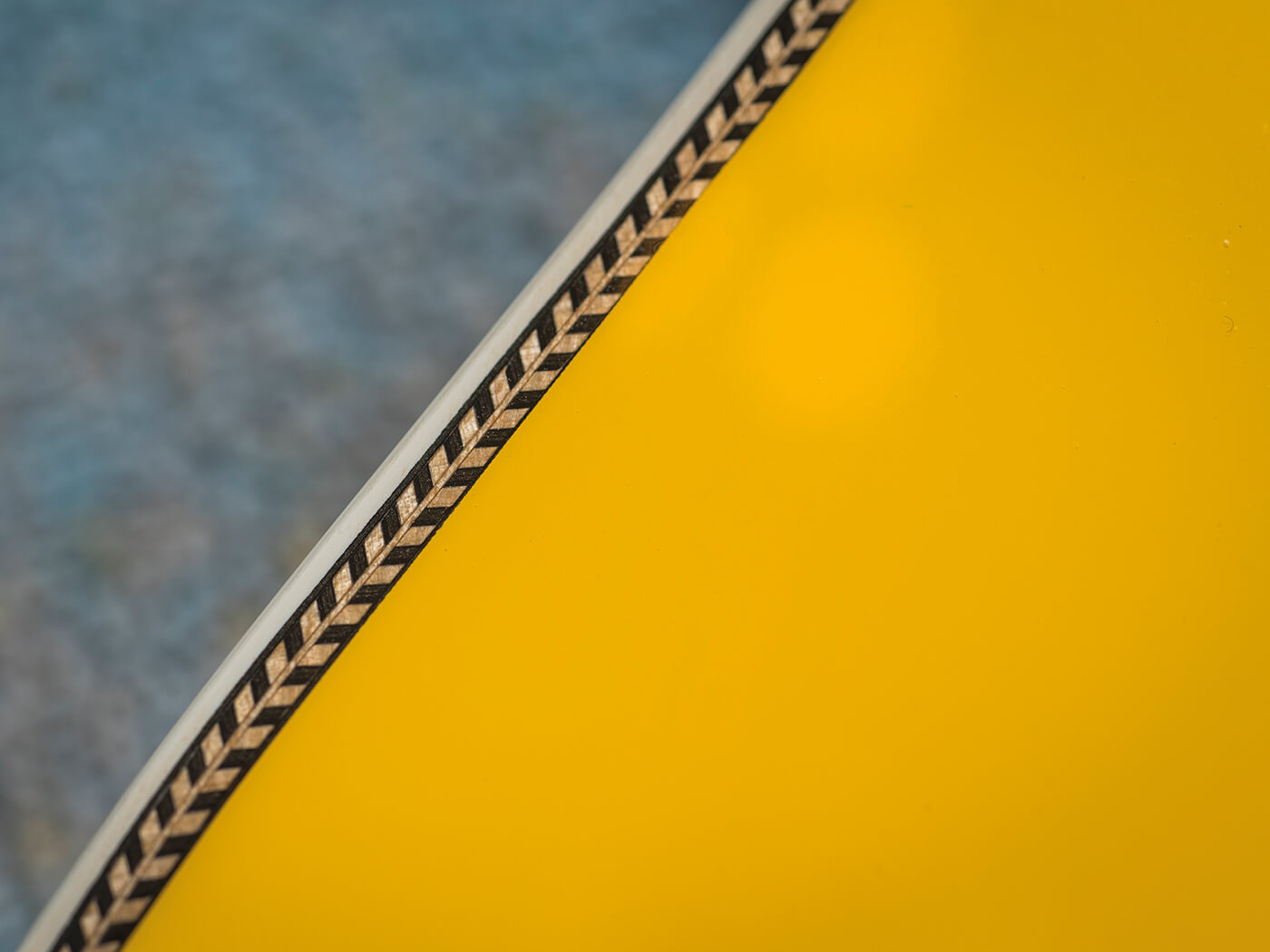
Thanks to its striking bright yellow finish, herringbone purfling and pink-insert Curtis Novak Guyatone pickup in the neck, it’s the kind of guitar that elicits double takes and more than its fair share of questions after the set. For Vanessa, it’s not as much an exercise in shock value as much as it is an expression of the way she sees her art.
“The pace of my music is in that baritone; slow-moving and percussive. It’s the first experiment that worked out.” She wouldn’t tell you this, but her music is also just as colourful.
Throughout years of experimenting with different guitars, Vanessa realised that one crucial element of guitar design she couldn’t overcome with most mass-produced instruments was body size. An unabashed fan of the sparkly late-90s Squier Super-Sonic models, she found that even that reduced and repurposed Jaguar shape couldn’t give her what she needed.
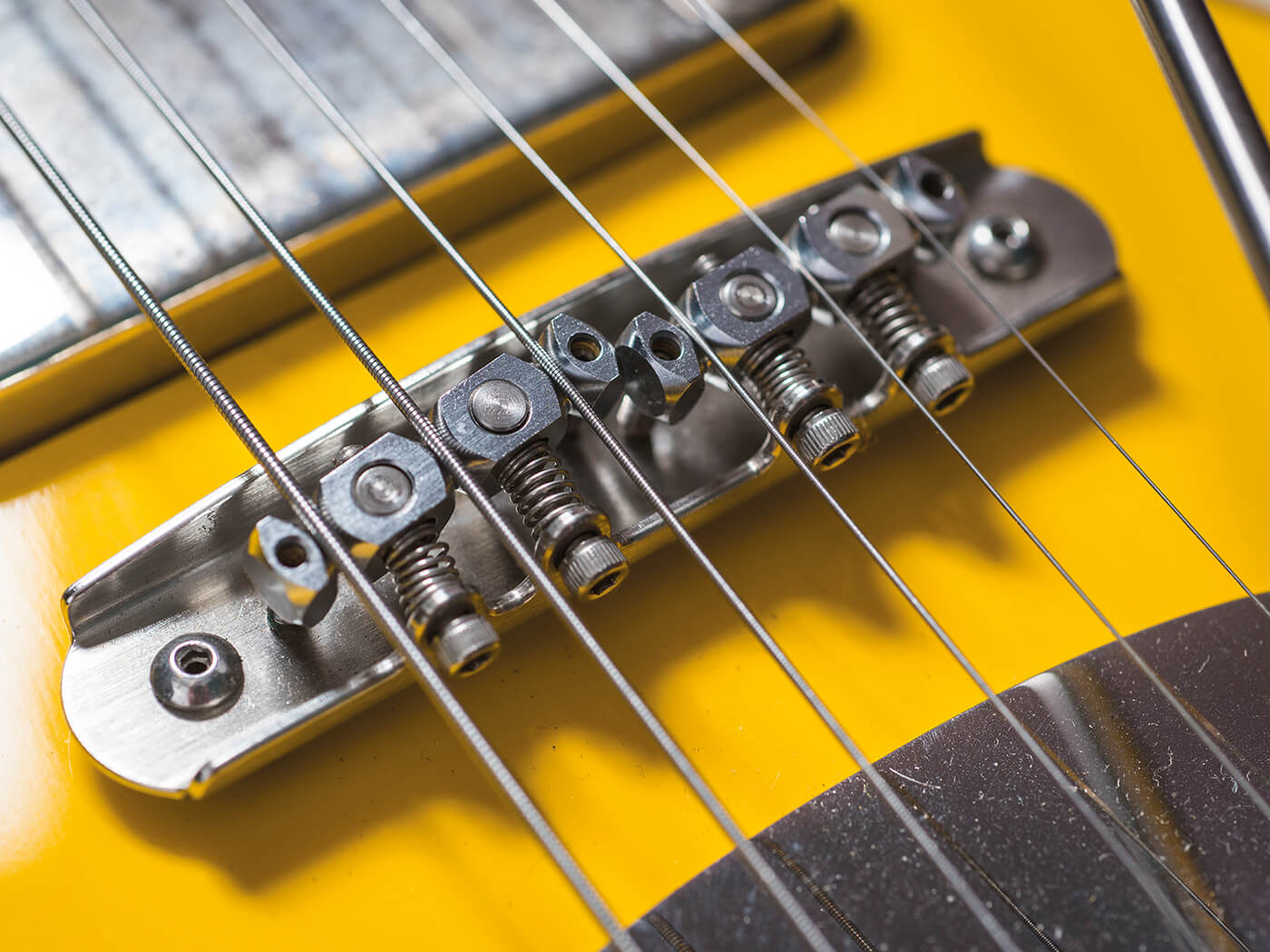
The lower horn juts out too far for ease of access for her left-hand technique in the upper register; the contours weren’t quite accommodating enough; the weight was becoming too much for her shoulders to handle and it would take quite a lot of modification for the body to accept her preferred Mastery bridge and vibrato kit. So she took her many complaints to Creston Lea and the two teamed up to design something fresh that ticks all of the right boxes for Wheeler.
“For better, for worse, relationships lead the way in this industry… and Creston’s the kind of guy who makes you want to work with him. He’s kind, he’s witty, he listens and he’s a guitar-building genius.” Their back-and-forth continued for some time, with drawings and what-ifs sent as the spirit moved. Soon, they landed on this minimalistic, almost Art Deco ‘Creature’ body shape, and Vanessa couldn’t be more in love.
Creature comforts
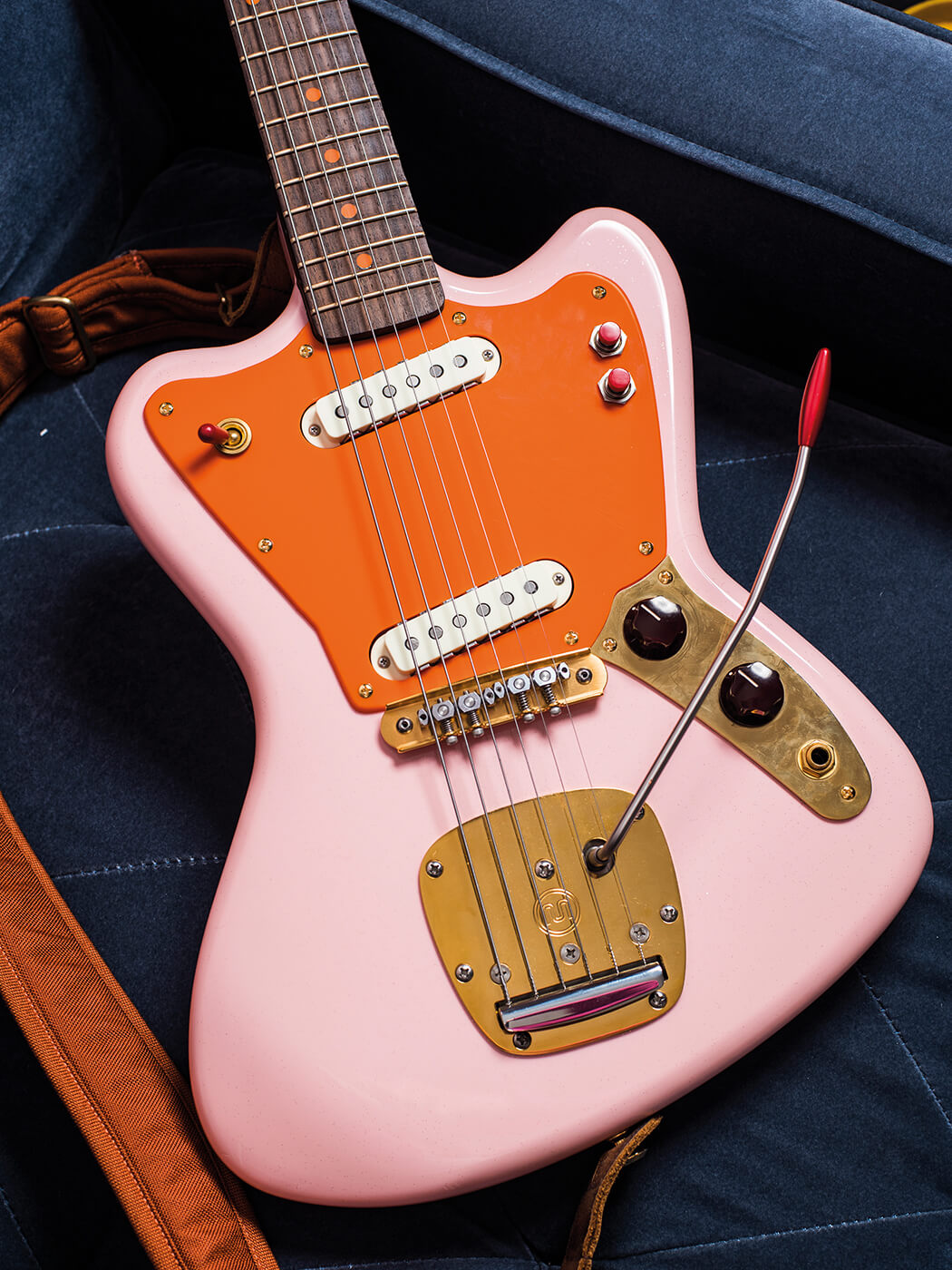
Creature features a torrefied alder body, an all-rosewood neck and two push button controls for series operation of the two Lollar Jaguar pickups as well as a high-pass ‘strangle’ switch. Taking into account its gold Mastery hardware, matching gold EVO frets, orange plastic fretboard inlays and pickguard and subtly sparkled pink finish, Vanessa calls this “the most ostentatious guitar I own”. No argument here.
The hard work of design seems to have paid off for both parties, as it seems that other players have ordered Creature models of their own. But for Wheeler, the real benefit here is all about alleviating her own physical discomfort.
“I have scoliosis and that means my shoulders are out of whack. Even carrying groceries hurts me, I loathe it. That’s why my guitars are so small and light.”
Thankfully, the guitar she and Creston dreamed up so far exceeded her expectations that she immediately ordered another with some minor spec tweaks. She had plans for a less glitzy instrument in a different colour, but the loss of a family member made clear the path to take.
“My dog passed away while she was living with my mother in a different state. I never got to say goodbye, I was distraught. I thought that this would be a nice homage to my dog who I love so much.”
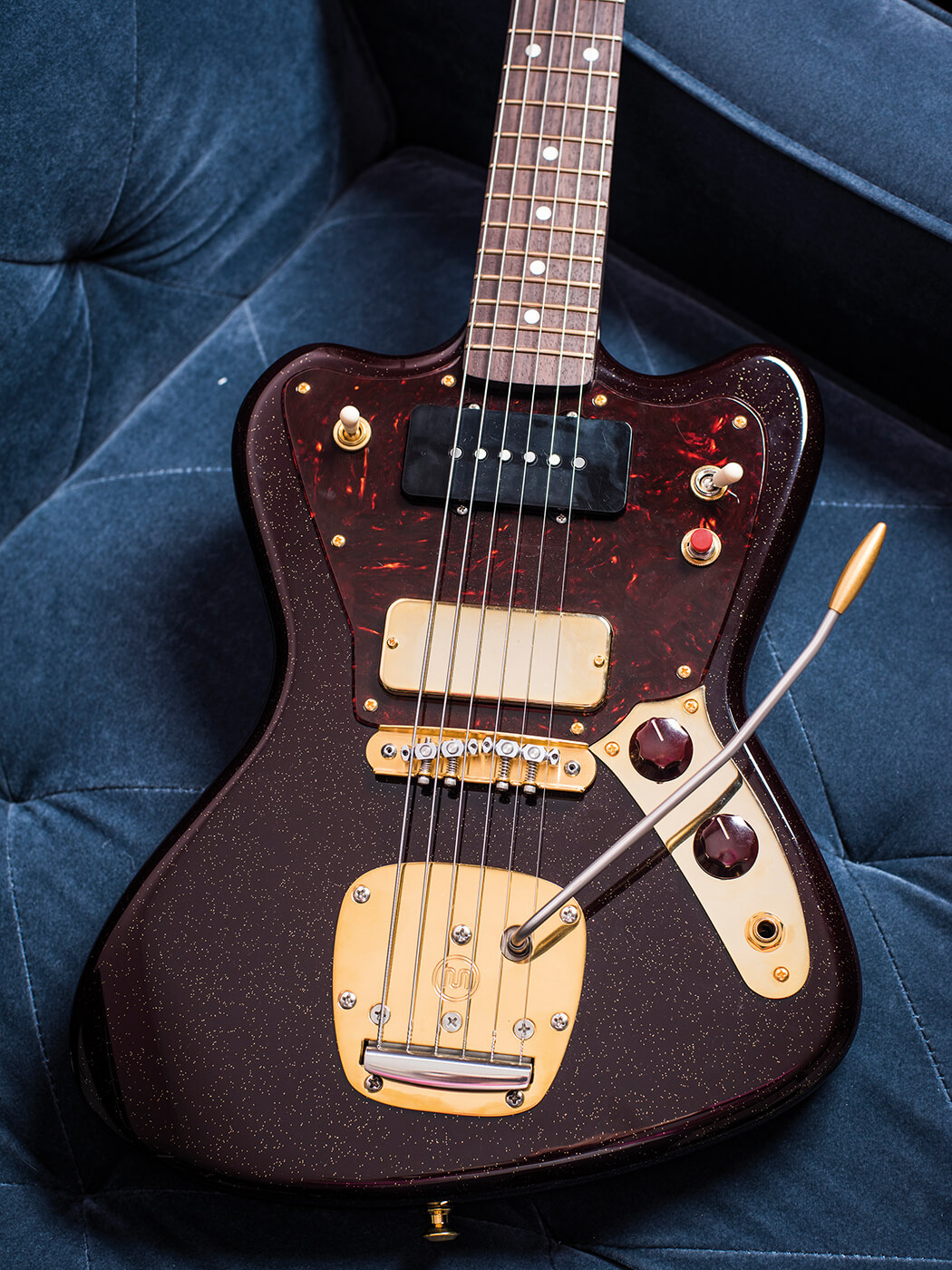
Creston mixed a deep Oxblood paint for the body – a perfect mate to the solid rosewood neck – and as a tribute to the pup’s brindle coat, a back-painted tortoise ’guard to accentuate the yellow-orange stripes in the material. A splash of gold glitter was applied to the body during the finishing process to give it some flash and match the gold hardware. When all was right, Vanessa gave it the same name as the furry friend who served as its namesake: Pony.
As usual, this guitar features locking Gotoh tuners, a Mastery bridge and vibrato kit and a hulking gold Lollar Thunderbird pickup in the bridge. One deviation that may have changed the game for her is the addition of a Lollar Jazzmaster pickup in the neck position, the combination of the two lending a uniquely tactile feel to her fingerstyle technique.
“It’s like writing with a ballpoint pen where you can hear the way it moves across the surface of the paper. It reminds me of the sound of a good P-Bass where you hear your hand rolling down the fretboard. The sound translates from your fingers to your ears. It’s persuasive.”
Latest squeeze
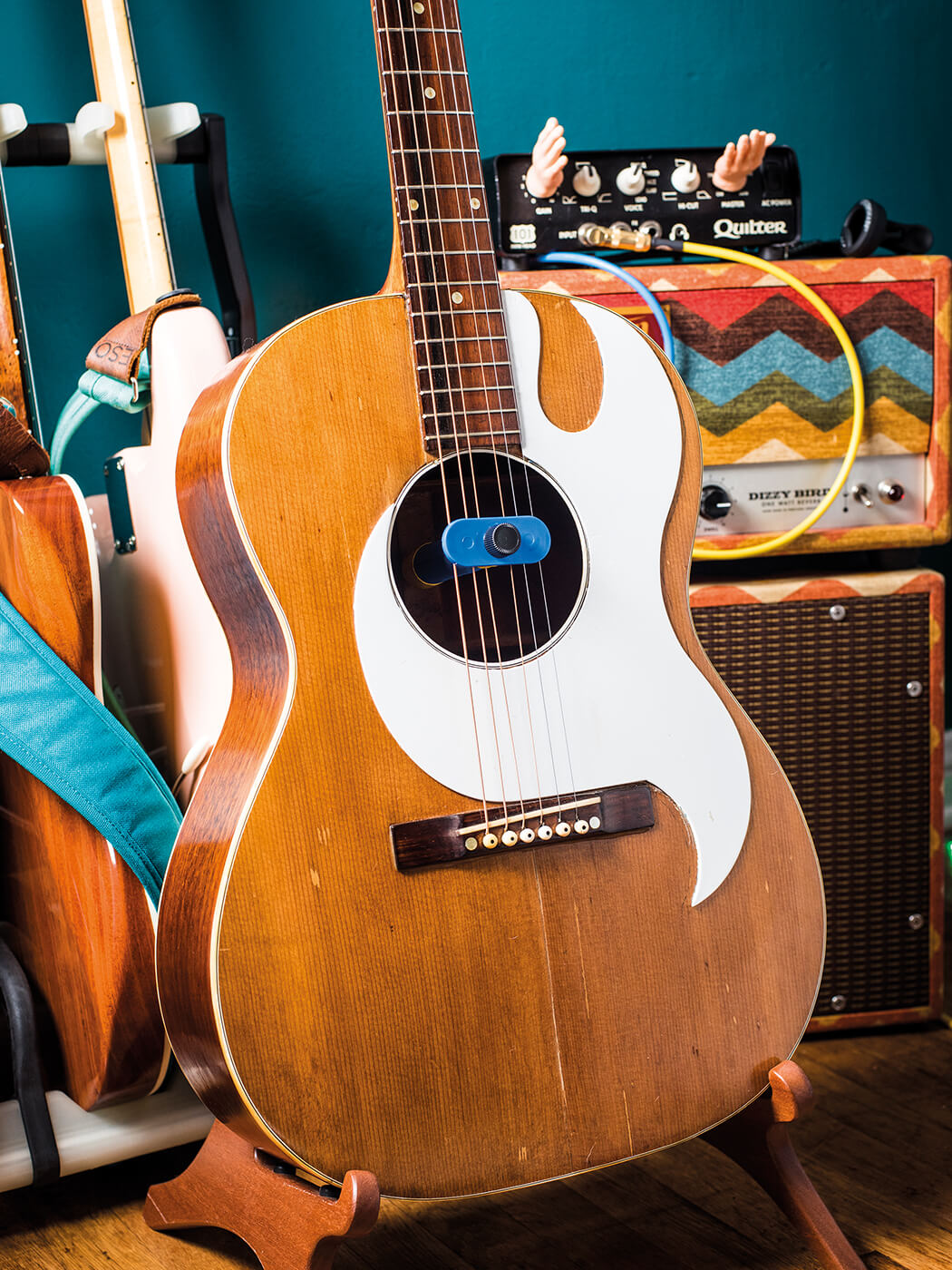
The last guitar we’re showing off from Vanessa’s collection is also her most recent purchase. Phantasma is an early 1950s Gibson LG-2 she compulsively scored from Chicago Music Exchange purely because of its small body and swooping, oversized pickguard. “I saw it on Reverb.com and fell in love immediately. I just felt very drawn to it – it was meant for me.”
It’s a bit of an odd purchase as acoustic guitars are a novelty for her these days, but Wheeler says that the giant pickguard makes this guitar perfect for strumming early in the morning. “It’s so quiet, I can play it at 7am without having to wear headphones, but it still has loads of personality.”
Aside from the blatant ’guard modification, the guitar is largely as it was when it left the factory, save for a few worrisome cracks, which kept the price low. Once she hands it off to a luthier for those fixes, she plans on installing a Gemini pickup in the sound hole for live performance. As it is, the guitar plays exactly the way she likes, with low action and a comfortable neck.
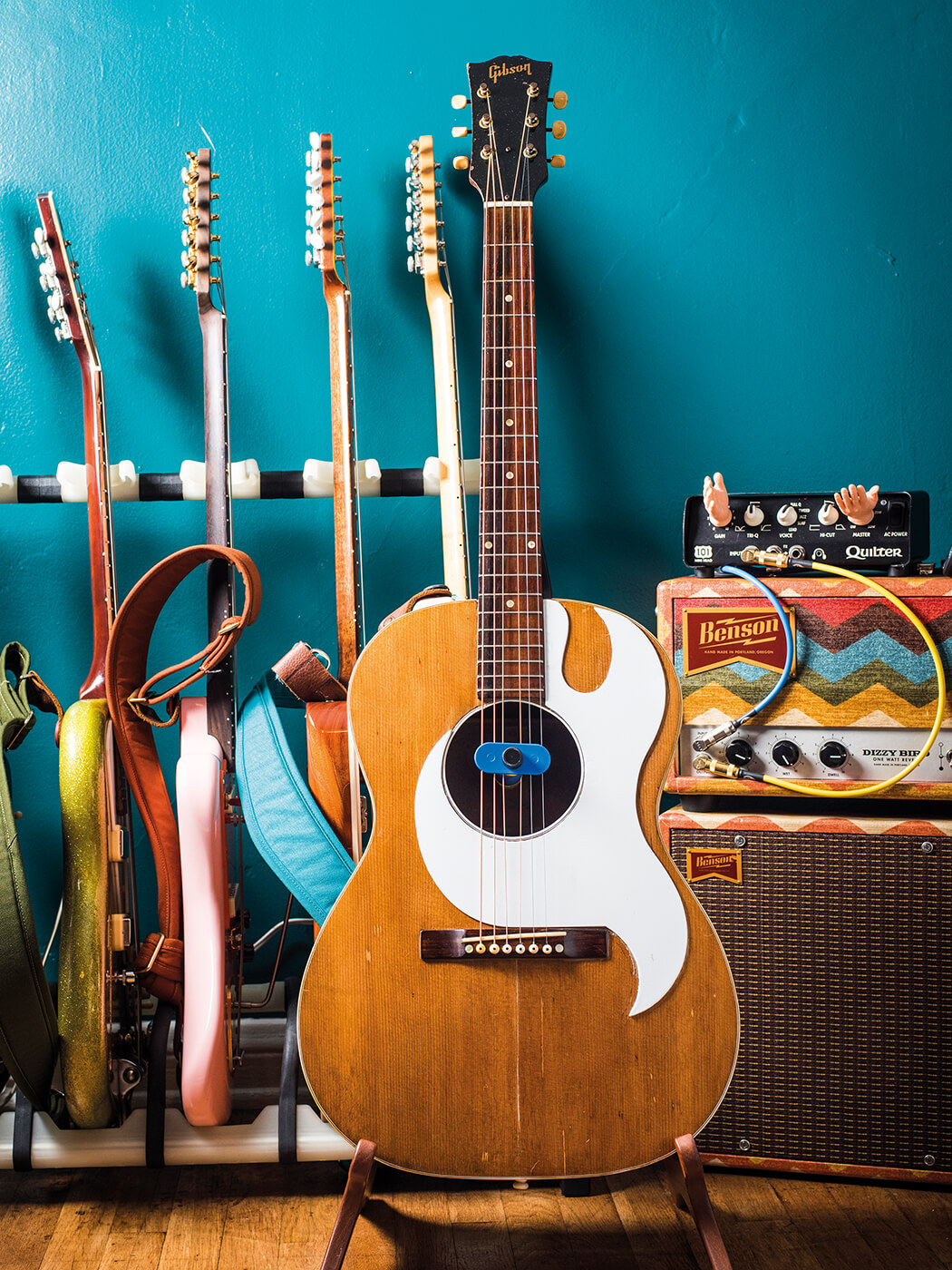
Currently, Vanessa is busy working on her next record with a fresh batch of completed songs that she hopes to unleash sometime in the next year. She and Ojeda have teamed up again to produce the tracks and fine-tune their live elements as well, hoping to “create a consistent show with a flow to it, one that doesn’t feel so singer-songwriter”. In this, there are talks of lighting cues, sound transitions, even a broader story element to tie the whole thing together. All of this seems to be in line with her goal of getting back on the road.
“I wanna tour. I want to get out there and play in front of people. I’m also not opposed to the idea of playing for other people, so you know, please hire me!”
Vanessa can be found on Instagram at @vavaenvivo as well as via vavamusique.com.

